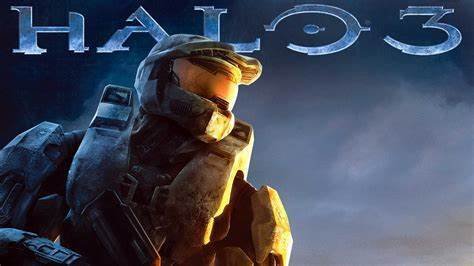When the original halo (2003): Combat Evolved launched in 2001, it immediately revolutionized the gaming industry. By 2003, the Halo franchise had established itself as a cultural phenomenon, evolving with incredible game icons and banners that became synonymous with the era of early 2000s gaming. These visual elements played a pivotal role in defining not just the game but also the brand itself, paving the way for Halo to become a staple in gaming history.
In this blog post, we’ll dive into the significance of the game’s iconic visuals from 2003, including its banners and game icons. We’ll explore how these seemingly small details contributed to the overall success and recognition of Halo as a brand.
Table of Contents
- The Impact of Halo (2003) on Gaming Culture
- Why Game Icons Matter
- Halo’s Game Icons: Simple Yet Powerful
- The Evolution of Banners in Halo (2003)
- How Game Icons and Banners Shaped Halo’s Brand
- Fan-Made Icons and Banners: Extending the Legacy
- The Lasting Influence of Halo’s Visuals
- Conclusion: A Legacy Written in Visuals
1. The Impact of Halo (2003) on Gaming Culture
By 2003, Halo: Combat Evolved had already become a massive hit. Its fast-paced action, immersive story, and pioneering use of multiplayer features forever changed the first-person shooter (FPS) genre. However, another key element that played a part in the game’s success was the strong visual identity it presented to its players.
The in-game icons and promotional banners contributed to the broader Halo experience, making it not just a game, but a fully immersive world. These visual elements helped to connect players to the universe of Halo, establishing a sense of familiarity and loyalty.
2. Why Game Icons Matter
Icons in games serve as visual shorthand, instantly telling players what to expect or how to engage with the content. Whether it’s a weapon icon, a game mode indicator, or even the iconic green “Master Chief” helmet, icons become the language of a game.
In Halo, the icons were much more than simple graphics—they were a reflection of the game’s futuristic yet grounded aesthetic. Icons in the menus, on multiplayer maps, and even within promotional materials allowed players to quickly identify their objectives, weapons, and abilities without breaking immersion.
3. Halo’s Game Icons: Simple Yet Powerful
The game icons in https://alertbrief.com were notably minimalist but deeply effective. One of the most recognizable symbols is the Halo ring itself—a circular structure that represents the game’s setting. The ring icon has appeared in various forms, serving as both a thematic element and a key piece of in-game lore.
The shield and health icons in Halo are other great examples of functionality meeting design. These icons didn’t need to be overly complicated, but their consistency and clear visual cues helped players immediately understand the game’s mechanics.
Weapon icons, too, became iconic. From the unmistakable silhouette of the energy sword to the shape of the battle rifle, these symbols became part of a visual language that players worldwide could instantly recognize.
4. The Evolution of Banners in Halo (2003)
Banners play a crucial role in promoting a game, and Halo (2003) did this exceptionally well. Whether for marketing campaigns, esports tournaments, or fan communities, the banners associated with Halo always portrayed an epic, larger-than-life atmosphere.
The 2003-era banners usually featured key imagery such as Master Chief holding his weapon against a backdrop of alien landscapes or massive battles between humans and the Covenant forces. These banners gave players a glimpse into the vastness of the Halo universe while also communicating a sense of urgency and adventure.
The banner designs were typically dominated by hues of green, black, and silver, drawing attention to the sci-fi military theme of the game. The clean and striking visual language of these banners made them not only eye-catching but also incredibly memorable.
5. How Game Icons and Banners Shaped Halo’s Brand
The cohesive design of Halo‘s game icons and banners was instrumental in establishing the Halo brand. The game’s distinctive aesthetic was consistently represented across various mediums, from in-game menus to promotional materials.
One reason for this success was that Halo kept its icons and banners simple, yet impactful. There was no clutter, no unnecessary details—just the core elements of the game, such as the Master Chief, the ring worlds, and the futuristic warfare that defined the series.
In addition, Halo‘s visual identity set the standard for other first-person shooters that followed. Its banners became iconic, instantly recognizable, and associated with the thrilling experience that Halo provided. This level of branding helped the game not only succeed but also endure as a cultural touchstone in the gaming industry.
6. Fan-Made Icons and Banners: Extending the Legacy
One of the fascinating aspects of the Halo community is how fans have embraced and extended the game’s visual identity. Over the years, countless fan-made banners and icons have surfaced, ranging from digital art to in-game assets created through Forge Mode.
Fan-made banners often pay homage to the original 2003 designs, using similar color schemes and layouts while adding unique touches. The popularity of these fan creations speaks to the strength of Halo‘s original visual design and its lasting appeal.
7. The Lasting Influence of Halo’s Visuals
The simplicity and power of https://itinfo.co.uk game icons and banners set a precedent for future games. Many modern titles borrow elements from Halo‘s playbook, understanding that a strong, cohesive visual identity can enhance player immersion and brand loyalty.
In the world of esports, Halo banners continue to dominate, showing the franchise’s long-term influence on competitive gaming. From tournament stages to digital leagues, Halo‘s visuals remain an integral part of its presence in the industry.
8. Conclusion: A Legacy Written in Visuals
When you think of Halo (2003), you may first recall its fast-paced combat, memorable storyline, or revolutionary multiplayer mode. However, the game’s icons and banners were equally important in defining its legacy. They helped build a recognizable brand that players could connect with instantly, and they continue to influence game design to this day.
Whether it’s the iconic green of the Master Chief’s armor or the simplicity of a weapon icon, Halo (2003)’s visual elements are as much a part of its success as its gameplay. They were, and continue to be, a crucial part of what makes Halo the legendary game that it is.







